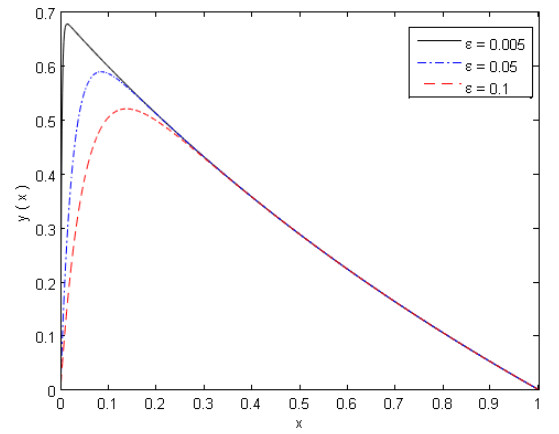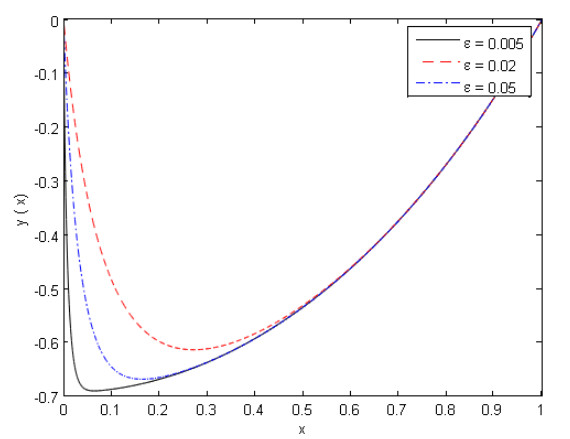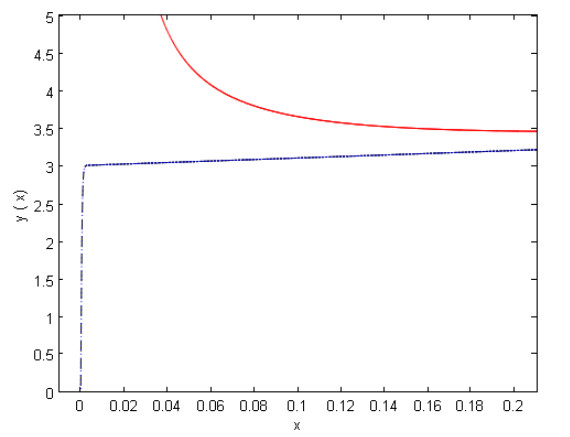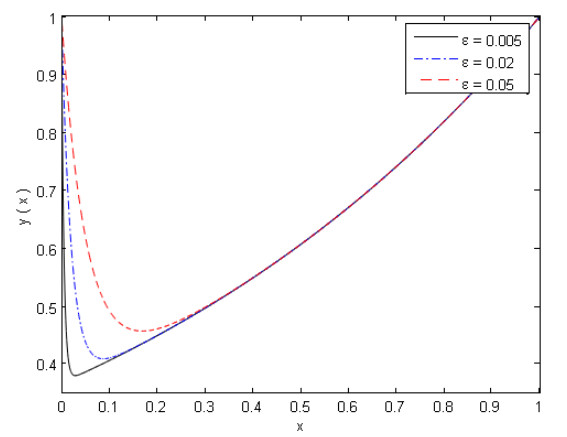Previous experimental studies of spontaneous imbibition on chalk core plugs have shown that seawater
may change the wettability in the direction of more water-wet conditions in chalk reservoirs.
One possible explanation for this wettability alteration is that various
ions in the water phase (sulphate, calcium, magnesium, etc.) enter the
formation water due to molecular diffusion.
This creates a non-equilibrium state in the pore
space that results in chemical reactions in the aqueous phase as well as
possible water-rock interaction in terms of dissolution/precipitation of minerals and/or changes in surface charge.
In turn, this paves the way for changes in the wetting
state of the porous media in question.
The purpose of this paper is to put together a novel mathematical model
that allows for systematic investigations, relevant for
laboratory experiments, of the
interplay between
(i) two-phase water-oil flow (pressure driven and/or capillary driven);
(ii) aqueous chemistry and water-rock interaction;
(iii) dynamic wettability alteration due to water-rock interaction.
In particular, we explore in detail a 1D version of the model relevant
for spontaneous imbibition experiments
where wettability alteration has been linked to dissolution of calcite.
Dynamic wettability alteration is built into the model by defining
relative permeability and capillary pressure curves
as an interpolation of two sets of
end point curves corresponding to mixed-wet and water-wet conditions. This
interpolation depends on the dissolution of calcite in such a way
that when no dissolution has taken place, mixed-wet
conditions prevail. However, gradually there is a shift towards more water-wet
conditions at the places in the core where dissolution of calcite takes place.
A striking feature reflected by the experimental data found in the literature
is that the steady state level of oil recovery, for a fixed temperature,
depends directly on the brine composition.
We demonstrate that the proposed model naturally can explain this
behavior by relating the wettability change to changes in the mineral
composition due to dissolution/precipitation.
Special attention is paid to the effect of varying, respectively,
the concentration of SO2−4 ions and Mg2+
ions in seawater like brines. The effect of changing the temperature is also demonstrated
and evaluated in view of observed experimental behavior.
1.
Introduction
Singularly perturbed boundary value problems (SPBVPs), also known as stiff, are not easily treated analytically or numerically [1,2,3,4,5,6,7,8,9,10,11,12,13,14,15,16,17,18,19,20] and so that having a simple program to obtain analytical and numerical solutions of these problems would be interesting and helpful. The most common analytical method to study SPBVPs is the method of matched asymptotic expansions which involves finding outer and inner solutions of the problem and their matching [1,2,3,4,5,6,7]. Recently, Wang [9] present a Maple program and its corresponding algorithm to obtain a rational approximate solution for a class of nonlinear SPBVPs. Such an algorithm is based on the boundary value method presented by Wang [8] and using Taylor series and Pade expansion to approximate the boundary condition at infinity. In fact, the accuracy of the obtained boundary layer solution in [8,9] depends upon how far the Pade expansion approximates the solution, which consequently depends upon the radius of convergence and how many terms considered in the expansion [21]. Therefore, to get accurate results over the boundary layer region, more higher-order terms may be needed [10]. Moreover, the technique of using Taylor series and Pade expansion for solving boundary layer problems with a boundary condition at infinity often results in nonlinear algebraic equations and hence multiple solutions appear which leads to unsatisfied results. To overcome these drawbacks, we have established a new and simple Maple program spivp, based on a new initial value method [11], to obtain approximate analytical and numerical solutions of SPBVPs. The algorithm is designed for practicing engineers or applied mathematicians who need a practical tool for solving these problems. Some examples are solved to illustrate the implementation of the program and the accuracy of the algorithm. Analytical and numerical results are compared with results in literature. The results confirm that the present method is accurate and offers a simple and easy practical tool for obtaining approximate analytical and numerical solutions of SPBVPs.
2.
Boundary value method [8]
Let us first recall the basic principles of the boundary value method presented in [8].
Consider the nonlinear SPBVP of the form
with conditions
where 0<ε≪1, α and β are given constants, p(x,y) and q(x,y) are assumed to be sufficiently continuously differentiable functions on [0,1], and p(x,y)≥M>0 for every x∈[0,1], where M is a positive constant. Under these assumptions, the SPBVP (2.1-2.2) has a unique solution y(x) which in general displays a boundary layer at x=0 for small values of ε.
Theorem 1. The solution y(x) of the nonlinear SPBVP (2.1-2.2) can be expressed as:
where u(x) and v(t) are the solutions of the following IVP and BVP given respectively by:
and
Proof. See Ref. [8].
In fact, v(t) cannot be always solved from Eq. (2.4) and so that one can assume that v′(0)=δ and use Taylor series and Pade expansion to determine the value of δ using the condition at infinity and obtain an approximate rational solution for Eq. (2.4) [8,9].
3.
Initial value method
In this section, an initial value method is established from the boundary value method in Theorem1 for solving SPBVP (2.1-2.2).
Theorem 2. The solution y(x) of the nonlinear SPBVP (2.1-2.2) can be expressed as:
where u(x) and v(t) are the solutions of the following IVPs:
and
where
Proof. Integrating Eq. (2.4) results in
where f(0,u(0)+v(s))=∫p(0,u(0)+v(s))dv.
Thus we have
which results in a first order initial value problem given by
with the initial condition
Thus, we have replaced the second order BVP (2.4) by the approximate first order IVP (3.7). Obviously Theorem 2 agrees with the theoretical results in [11].
Remark. The value of δ used in the boundary value method [8,9] is easily obtained from Eq. (3.3) as δ=f(0,u(0))−f(0,α)
3.1. Theoretical results for linear problems
Using the initial value method presented in Theorem 2 for linear problems results in some useful theoretical results.
Let's consider the linear SPBVP
with conditions
where 0<ε≪1, α and β are given constants, p(x) and q(x) are assumed to be sufficiently continuously differentiable functions on [0,1], and p(x)≥M>0 for every x∈[0,1], where M is a positive constant. The assumption merely implies that the boundary layer will be in the neighborhood of x=0.
Theorem 3. The solution of the linear SPBVP (3.8-3.9) can be approximated by:
Proof. According to the initial value method presented in Theorem 2, we have
where u(x) and v(t) are the solutions of the following IVPs:
and
The reduced problem (3.12) and the boundary layer corrected problem (3.13) are easily solvable since they are separable and thus (3.11) results in the asymptotic analytical solution given by
which is the well known asymptotic solution given in [2,11].
Obviously, the value of δ used in the boundary value method in Theorem 1 can be obtained directly from (3.13) as δ=v′(0)=−p(0)(α−u(0)) which agrees with the theoretical results in [8,9].
4.
Approximate analytical solution in Maple
Mathematical mechanization is one of the important methods of mathematical studies [9,12,13,22,23,24,25,26]. In Maple, obtaining analytical solution of the nonlinear SPBVP (2.1-2.2) through solving the IVPs (3.2) and (3.3) can be well established a very simple symbolic program that can easily calculate the approximate analytical and numerical solutions. Now if we want to solve SPBVP (2.1-2.2) using the initial value method in Theorem 2, everything we have to do is just to input information about the SPBVP, and the program will give out the solution. The program spivp is as follows:
spivp : = proc (p, q, alpha, beta)
local p0, q0, pu, qu, f, us, k, vs, sol, vx, iniu, iniv;
p0 : = unapply(p, x, y);
q0 : = unapply(q, x, y);
pu : = p0(x, u(x));
qu : = q0(x, u(x));
f : = unapply(int(p, y), x, y);
iniu : = u(1) = beta;
us : = rhs(dsolve(pu*(diff(u(x), x))+qu = 0, iniu, u(x))); k : = eval(us, x = 0);
iniv : = v(0) = alpha-k;
vs : = rhs(dsolve(diff(v(t), t)+f(0, v(t)+k) = f(0, k), iniv, v(t)));
vx : = subs(t = x/ϵ, vs);
sol : = simplify(us+vx, size)
end proc
For convenience, in the program spivp, we always let x represents the independent variable, and set the parameters as following:
p: the coefficient, p(x,y), in the equation which to be solved.
q: the coefficient, q(x,y), in the equation which to be solved.
α,β : the boundary values.
For example, if we consider the SPBVP:
One just input the following command
spivp(exp(y),−pi/2.sin(pi.x/2).exp(2.y),0,0);
5.
Examples
In this section, four examples are solved to illustrate the implementation and the accuracy of the method.
Example 1. Consider the nonlinear SPBVP from Bender and Orszag [6]
To solve this problem, we input the following command:
spivp(2,exp(y),0,0)
The output is:
which is the uniform valid approximate solution given by Bender and Orszag [6]. The solution of Example 1 at different values of ε is presented in Figure 1.
Example 2. Consider the nonlinear SPBVP from O'Malley [2]
Input the following command in Maple
spivp(exp(y),−Pi/2.sin(Pi.x/2).exp(2.y),0,0);
The output is
which is the uniform valid approximate solution given by O'Malley [2]. The solution of Example 2 at different values of ε is presented in Figure 2.
As shown from the previous two examples, the present algorithm offers a simple and easy tool for obtaining asymptotic analytical and approximate numerical solutions for SPBVPs.
Example 3. Consider the nonlinear SPBVP from Kevorkian and Cole [7]
For comparison purpose, we write the uniform approximation provided by Kevorkian and Cole [7] as
where c1=2.9995 and c2=1/c1ln[(c1−1)/(c1+1)].
For this problem, Wang [9] has obtained a solution given by:
where t=x/ε, and
where δ=−1.999791999.
Here we apply the present method by inputting the following command in Maple
spivp(y,−y,−1,3.9995);
The output is
In Figure 3, the present solution (5.7) and the obtained solutions by Wang [9], Eqs. (5.5-5.6) are compared with the uniform approximate solution in [7] at ε=0.001. As shown from Figure 3 the solution (5.5-5.6), solid red line, deviates much from our solution (5.7), dashed blue line, and the uniform approximate solution, dotted blue line, in [7]. In fact, applying the conditionlimt→+∞v(t)=0 to (5.6) results in two different values for δ (δ=−1.999791999, δ=−0.5) and each one of them leads to unsatisfied results. The numerical results of Example 3 are compared with the results in literature in Table 1. Moreover, the results for different values of ε are presented in Table 2.
Example 4. Finally, we consider the following linear SPBVP from Bender and Orszag [6]
For this problem, Wang [9] has obtained the following rational solution:
where
and
Using the following command :
spivp(1,−y,1,1),
the obtained solution is
The numerical results of Example 4 are shown in Tables 3, 4 and Figure 4.
Obviously, the solution in (5.9) needs more higher-order terms in Pade's expansion to match the boundary layer behavior [10].
6.
Conclusion
In this paper, we have presented approximate analytical and numerical solution of SPBVPs using a new and simple Maple program spivp. The method is based on an initial value method that replaces the original SPBVP by two asymptotically approximate IVPs. These IVPs are solved analytically and their solutions are combined to approximate the analytical solution of the original SPBVP. The method is very easy to implement on any computer with a minimum problem preparation. We have implemented it in Maple and applied it to four examples and compared the obtained results with the results in literature. The results indicate that the method is accurate and offers a simple and easy practical tool for the practicing engineers or applied mathematicians who need a practical tool for obtaining approximate analytical and numerical solution of SPBVPs.
Acknowledgment
The author would like to thank the referees for their valuable comments and suggestions which helped to improve the manuscript. Moreover, the author acknowledges that this publication was supported by the Deanship of Scientific Research at Prince Sattam bin Abdulaziz University, Saudi Arabia.
Conflict of interest
The author declares no conflict of interest.










 DownLoad:
DownLoad:




